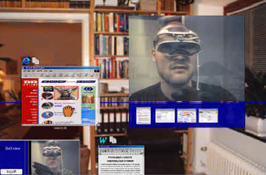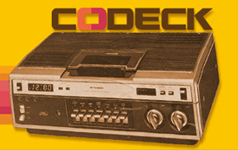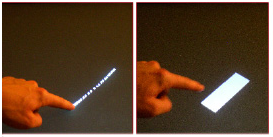

metamanda>>weblog: being interdisciplinary
So, zephoria posted about interdisciplinarity and set me off thinking about what it means to be interdisciplinary, and what is a discipline anyway. Now, given what the topology of my mind is like lately, it takes just the slightest nudge in that direction and I tumble down that slope with every-increasing velocity.
A few months ago we had a little panel/seminar on interdisciplinarity, since Informatics is a pretty interdisciplinary department, inside of a School of Information and Computer Sciences (sort of an Information School + CS program smushed together… yes, there is a little culture clash). Now of course, the terms “cross-disciplinary” and “multi-disciplinary” and maybe even “extra-disciplinary” came up, as well as these illustrations: (first image)
I doodled most of the way through, which doesn’t necessarily mean I’m not paying attention (often my class notes are just informative doodle) but I did end up a little disappointed in what some folks had to say. (People from UCI will have fun trying to guess who said what.)
One opinion expressed was along the lines of “doing anything interdisciplinary is too risky until you’ve gotten tenure,” which I think exhibits a profoundly poor understanding of what it means to be interdisciplinary. I think zephoria is right, (you DID read her post that I linked to, right?) it’s at least partly an identity thing. I would be profoundly unhappy if I tried to limit myself to mainstream CS for my whole graduate career, and also feel incomplete if I only did design, or sociology. Besides, wait till you have tenure and the methods and assumptions of whatever discipline you were in will be so thoroughly entrenched in your mind that it will be difficult to do really good interdisciplinary work.
Another guy seemed to think that some people are just constitutionally interdisciplinary. This view I can understand and appreciate. But he also tells stories like “I walked 3 miles in the snow to physics school, and then another 5 miles to art school, and then another 6 miles to the studio where I was apprenticing under a master welder who beat me daily, and it was uphill all three ways, and did i mention it was snowing that whole time and i was too poor to own shoes because of all the tuition i was paying.” He would conclude that basically if you don’t have the nads to stick it to the man the way he did, then what are you even doing trying to be interdisciplinary? He thought he was very cool. I respect his efforts a lot, but ultimately that attitude isn’t constructive. No researcher is an island. Struggle is fine, being un-mainstream is fine, but without a community or any mentorship, your research will suffer.
Another guy said that in his vast industrial experience, when someone says they’re “interdisciplinary” they really mean they are dilettantes. The classic “jack of all trades master of none” stereotype. That struck a nerve. It’s a perception that I think we interdisciplinary types struggle with a lot, and we should. It’s too easy to have breadth and no depth. I experienced that in my interdisciplinary major as an undergrad (actually, the problem there was largely breadth and no synthesis/connection). Zephoria mentions being disappointed in the job talks she saw for a high-quality interdisciplinary program. It’s too easy to make a successful career social-sciencing to computer scientists, and designing it up amongst the social scientists, and being technical amongst the designers, and looking good without knowing your shit very rigorously. I am constantly afraid that I am doing this. And I am constantly trying to avoid being like that. We are valuable bridges between disciplines and communities of practice, but I don’t think we can settle for being only that. We have to have rigor, and depth. We have to know the methods and theories used in these various disciplines… know them well and then be creative enough to understand where they can be applied that maybe no one thought to apply them before. And in order to be that good, I think we do have to be hard on ourselves, and other have to be hard on us too sometimes.
So yeah, I’m always questioning myself. Do I know enough? Is my ethnographic research just full of shit? Am I a good enough programmer? Would this prototype fly in a real design program? Have I read enough books this quarter? And that is as it should be. When I meet interdisciplinary researchers or practitioners who aren’t wigging out like this, who seem self-satisfied… well, I don’t trust them.
But the whole thing just made me call into question what a discipline is anyway. Computer Science is a young discipline, and as best I can tell it used to be one part mathematics and one part building shit. I keep thinking back to that paper I read earlier about boundary work and defining science during the Victorian Era. “Science” is not a static concept. What we mean when we say “science”, “philosophy”, and “art” has changed over the centuries. If disciplines are not static, then how do they change and form over time? And how does “interdisciplinarity” play into this changing landscape of thought? How do issues of culture, social networks and funding influence interdisciplinary collaborations?
This is what I doodled: (second image)
Of course, there’s always the danger you’ll end up hip-deep in bullshit.
Now there is a certain crass humor in likening disciplinary knowledge to piles of shit. But, it’s something we produce. And shit can be gross and stinky and make you sick… hey, so can academia. But it also makes the crops grow. So, I’m not trying to be insulting here.
In the end, I’m most at home in the in-betweens. I’m quite visibly hapa, so maybe it’s built in to my sense of self (as z guessed in her entry). It’s not (usually) an identity crisis for me, it’s just how I am.
Filed under: academic, art, new media, research, social, thesis











